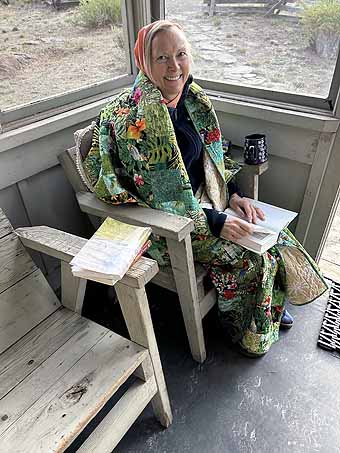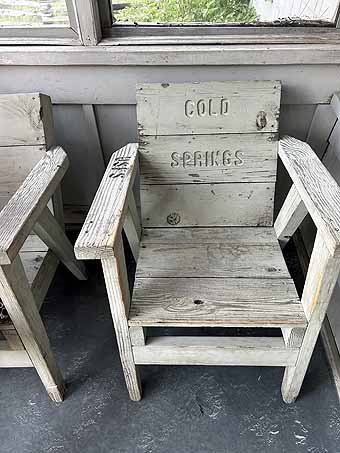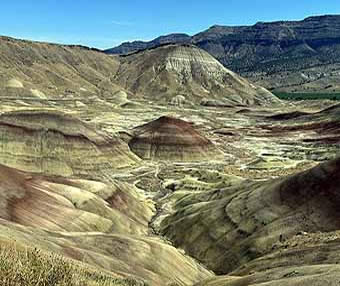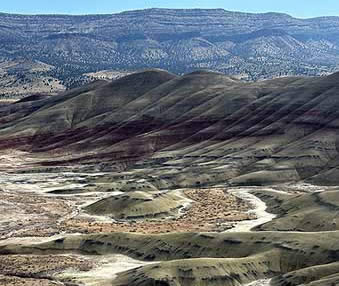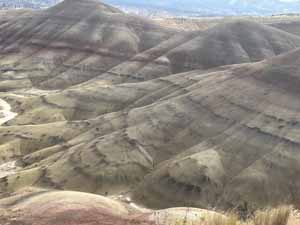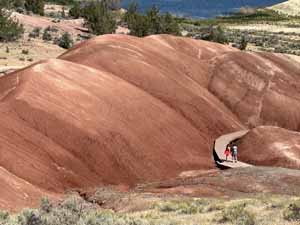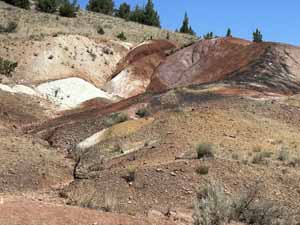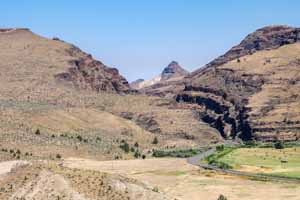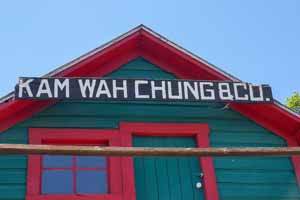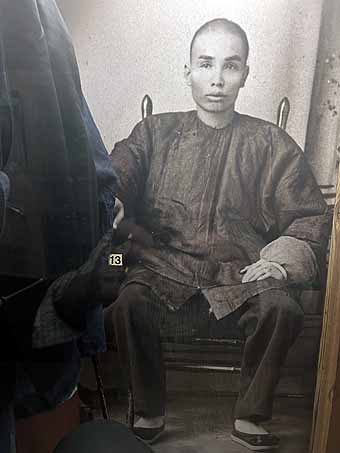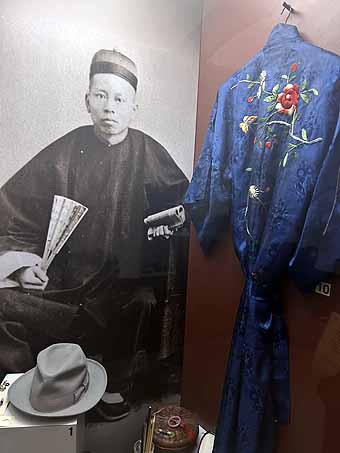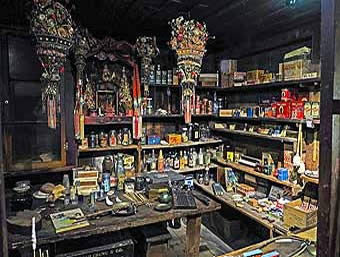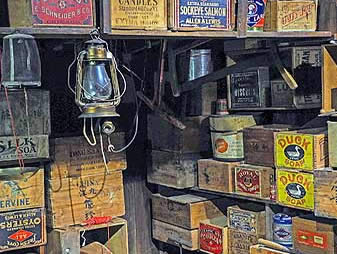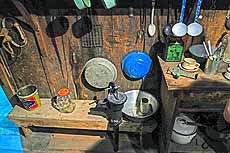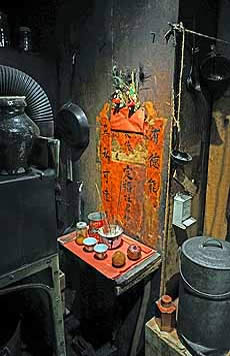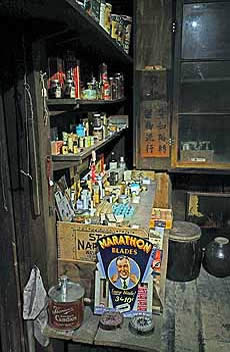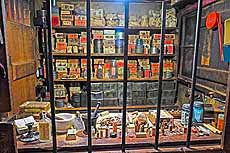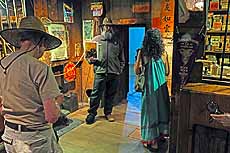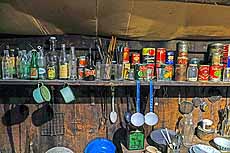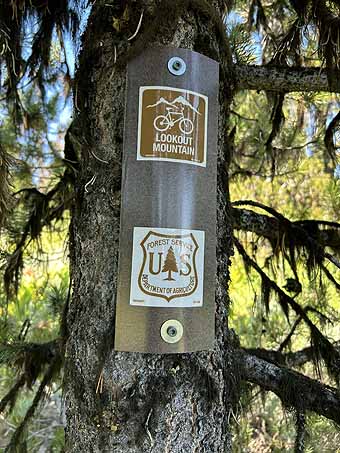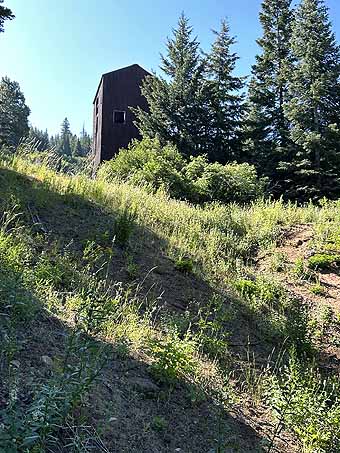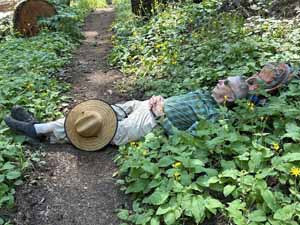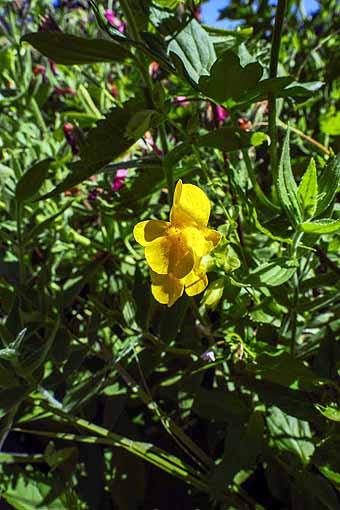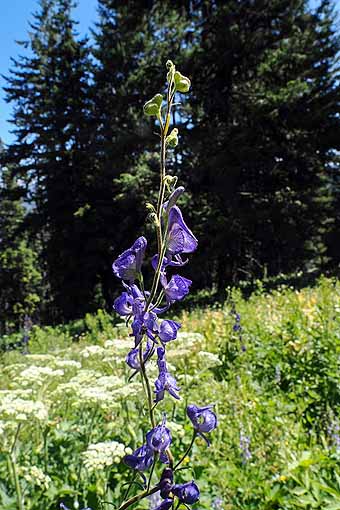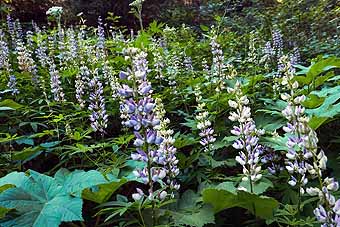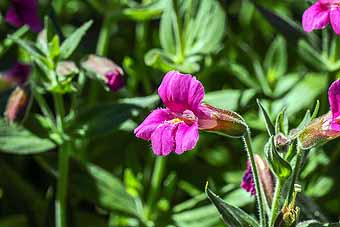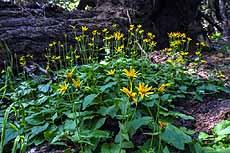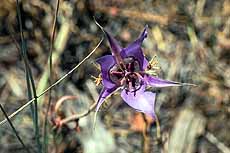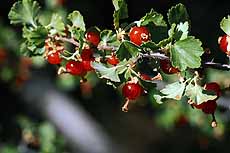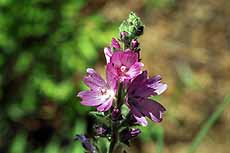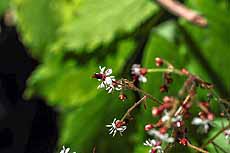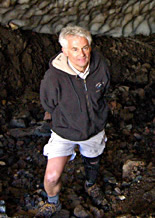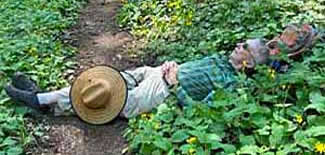 |
|
SELDOM SEEN SIGHTS |
|||
Visiting the John Day Country |
|||
Story and photographs by Lee Juillerat |
For Danny Hawkes, spending four nights in the Cold Springs Guard Station cabin was nothing. It’s a place he and wife visit frequently, sometimes just the two of them, more often with family and friends. Friends like me, my wife, Liane, and longtime hiking/climbing buddy Steve Underwood.
The Cold Springs Cabin isn’t your typical Forest Service rental cabin, which are normally cramped, abandoned or seasonal fire lookouts. Located in the Ochoco National Forest near Prineville and Mitchell, Cold Springs Cabin has three bedrooms, living room, two bathrooms – one with a tub, one with a shower - flush toilets, a picnic table, a kitchen with a stove and refrigerator along with basic utensils and cleaning supplies. Although it’s not near trailheads, it proved to serve as a great base for a variety of outings.
The best-known regional lure is the John Day Fossil Beds National Monument, especially the aptly named Painted Hills unit, touted as one of Oregon’s Seven Wonders. Yes, the hills indeed appear to be the work of a Van Gogh or Gauguin, its landscape eccentrically colored with vibrant hues of red, yellow, gold, orange and more – especially at sunrise and sunset.
Located nine miles northwest of the town of Mitchell and six miles north of Highway 26 on Burnt Ranch Road, the Painted Hills unit features short, scenic walks, including the Painted Cove, Leaf Hill, Red Scar Knoll, and Painted Hills trails.
We also visited the Sheep Rock Unit, where fossils of plants and animals have been found in geological layers dating from 33 million years ago. It’s also the home of the Thomas Condon Visitor Center, a museum and research laboratory showcasing millions of years of fossils and history. Other times I’ve visited the Clarno Unit, which features the Palisades, volcanic mudflows formed 40 to 54 million years ago. All three are worth visiting.
Danny had also made reservations for another experience - the Kam Wah Chung State Heritage Site in the town of John Day. We took the 45-minute tour with a park ranger who provided insight on the history of the Kam Wah Chung Co. Museum. It first opened in the late 1800s and served as a Chinese apothecary, general store and social hub for what was once the third largest Chinatown in the country.
For more than 50 years the small store/now museum was the home to its proprietors, Ing “Doc” Hay and Lung On. Kam Wah Chung and Co. served as a hub of social and economic activity in John Day, and became a popular destination for locals and travelers. The museum preserves the history of Chinese-Americans who settled in the area during the 19th century, and their contributions to the area’s culture and economy.
The adjacent visitor center also displays audio and visual presentations, photographs, and interactive exhibits that tell the story of the Chinese-American pioneers.
Another day was spent hiking to Lookout Mountain. We took a loop route that began and ended at the Mother Lode Trailhead. On the way up we meandered through wildflower-lush meadows along the Lookout Mountain Trail. Shortly after leaving the trailhead parking area, we passed a long-abandoned three-story mine building and its collapsed mine shaft. Visiting the site is not recommended because the site may be contaminated by the red cinnabar ore that was mined and processed here into poisonous mercury.
The view from atop Lookout Mountain included a sampling of the Cascades, including the Three Sisters (South, North, and Middle), Mount Jefferson, Mount Hood and others. We followed the Mountain Loop Trail back to our car, again being wowed by more fields of colored wildflowers until we dropped into thickets of subalpine fir, grand fir and towering Ponderosa pines.
But the real treat were gardens of trailside flowers of all colors. Some bloomed individually, others overlapped in colorful fields. Thanks to a flower identification app on Danny’s phone, we are able to discover that the array included Columbian monkshood, great willow herb, heart-leaved arnica, pacific chanters nightshade, Oregon checker-mallow, brook saxifrage, common monkey flower, Cusick’s golden weed, great purple monkey flower, mountain mondardella, lupine, wax currant, cows parsnip, and Columbian monkshood, among others.
During our five days we pursued and enjoyed other sights and experiences. There’s much to see and appreciate. But visitors to Eastern Oregon’s John Day country can easily find and select their own adventures. Planning Your Visit To learn about the John Day Fossil Beds National Monument, visit their website at https://www.nps.gov/joda/planyourvisit/index.htm. Note: the three units are between one and two hours apart, so go prepared. For information about the Kam Wah Chung and Co Museum, and to make reservations for ranger-led tours, visit the website at https://stateparks.oregon.gov/index.cfm?do=park.profile&parkId=5 or call 541-575-2800. A good source for information about hiking trails is “Eastern Oregon, 100 Hikes,” by William Sullivan. For information on the Cold Springs Guard Station, visit the website at https://www.fs.usda.gov/r06/ochoco/recreation/cold-springs-guard-station. About the Author
|
|||||||||||||||||||||||||||||||||||||||||||||||||||||||||||||||||||||||||||||||||||||||||||||||||||||||||||||||||||||||||||||||||||||||||

